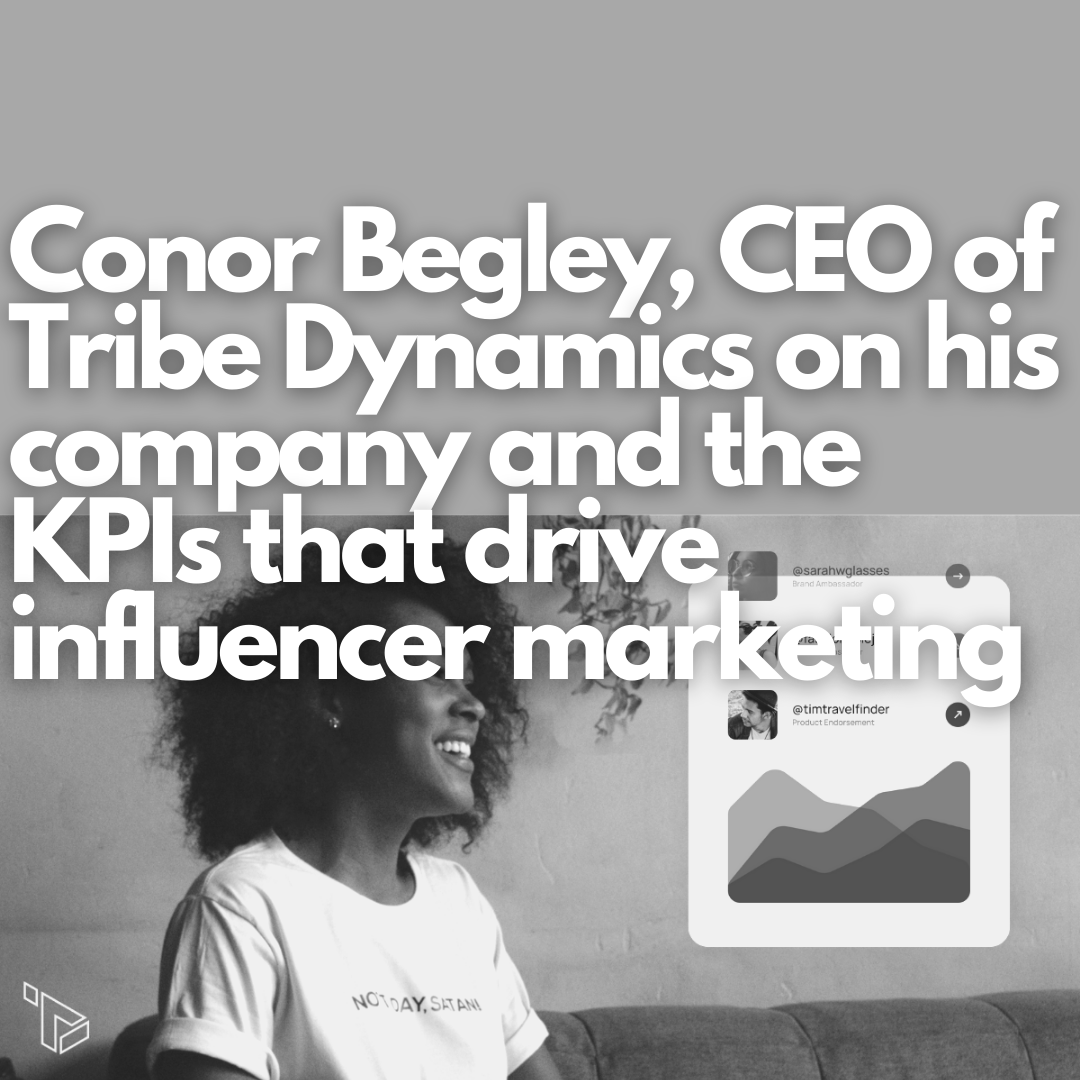
Technology
Conor Begley, CEO of Tribe Dynamics on his company and the KPIs that drive influencer marketing
Monitoring Key Performance Indicators (KPIs) is important in measuring the success of any marketing campaign. Learn how influencer marketing management company Tribe Dynamics uses KPIs in their business model.
Conor Begley is the co-founder of Tribe Dynamics, an influencer marketing management company headquartered in San Francisco. Founded in 2012 Tribe Dynamics helps brands manage their relationships with thousands of influencers and the content they provide.
The way the world publishes and consumes content has changed drastically in recent years. According to Conor Begley, co-founder of Tribe Dynamics, we are in the midst of a publishing revolution right now, a phenomenon that has been so far seen three times. First with the printing press, then with radio, next television, and now the internet.
With this new publishing landscape comes new opportunities for brands to create content and promote their business – and more affordable ways of doing so. As publishing on the internet becomes more and more accessible, it’s becoming increasingly important for brands to produce content that resonates with their audience, and do so in a way that is sustainable.
The overwhelmingly popular method of navigating this revolution is through influencer marketing, which Conor says has always existed, to an extent.
Conor’s career in influencer marketing began when he and his girlfriend (now wife) were living in Australia. After graduating from school in 2009, Conor worked as an intern at a startup that grew quickly. By the time he left the company, they had grown from 30 employees to over 300, and Conor was leading and training the sales team. Conor was doing consulting for an up-and-coming brewery in Australia when he realized that bartenders, in a way, were influencers – this was before the days of Instagram.
Bars had their own Facebook “fan pages” to which bartenders, bar owners, locals, and even tourists would join. There were hundreds of “fans” in these Facebook groups, all who were loyal to the establishment in one way or another.
Conor and his girlfriend would interview local bartenders, take pictures of them in action, and publish albums entitled “Our Favorite Bars and Bartenders.” They would tag the bar and bartender, share the album, and inevitably, sales would increase.
As bars began to create content of their own, and amassed a fan base, they essentially became publishers and their fans, influencers. This reckoning gave Conor the idea for Tribe Dynamics.
Enter Tribe Dynamics
Today, Conor has pivoted from connecting bars with breweries, distributors, and fans, and now connects worldwide brands like Fashion Nova and Gucci with influencers that create content for them in order to connect with their fanbase, otherwise known as customers.

According to Conor, Tribe Dynamics is “a CRM system for managing thousands of [influencer] relationships; competitive benchmarking for understanding how you’re doing within the industry” focused on enterprise brands.
“The reason for that,” Conor said, “is that the needs that [brands like] Gucci has are just vastly different than that of a startup company…Gucci will have 11,000 influencers that will create 300,000 pieces of content about them each year, just in the United States. That means you’re dealing with almost a thousand pieces of content a day. What Gucci needs to be able to do is have a system for managing all 11,000 people.”
In addition to managing a brand’s influencer’s and content, Tribe Dynamics helps brands measure the success of their campaigns through what’s called earned media value (EVM).
“You need some kind of measure that allows you to benchmark how one brand is doing versus another. How one campaign is doing versus another. How you’re doing in one market, like the US versus UK versus Germany. You really need to come up with some kind of consolidated metric. EMV is the one we latched onto.”

EMV allows brands to measure their success in the way that makes the most sense for them. For example, they can measure impressions, total engagement, engagement on a particular post, number of views, etc. Each interaction is assigned a value and then measured for a certain amount of time. The end value is the total EMV. Tribe Dynamics helps brands measure their EMV across all platforms including social media, websites, and blogs.
“I think the data that we’ve created is really interesting for understanding how brands are performing in the market because we’re really trying to measure every influencer and every piece of content so you get a comprehensive view of performance.”
KPIs are key to influencer marketing success
When influencer marketing began, there weren’t many ways to measure the success of a campaign other than seeing how it affected sales. Now that influencer marketing is growing, and technology with it, KPIs are not only measurable, but they are becoming more complex. Today, it’s incredibly important for brands to measure three things: the quality of their relationships with their influencers, their campaign benchmarks, and how the brand is doing holistically.
Conor says that holistic growth and success is a key factor in a brand’s EMV. Holistic growth refers to how a brand grows organically, meaning without the use of advertising through traditional marketing efforts or influencer marketing. Holistic growth looks at who is talking about and loving a product in a genuine way, without any incentive to do so.
If a brand focuses too much on influencer marketing, and offers to pay or give free products to influencers that are not genuine fans of the product, they risk losing those who are. Conor says that it’s important for brands to focus their efforts on the people who are already interested in their brand and strengthen relationships with those people.

Looking to the Future
Looking ahead, it’s going to be imperative that influencers either learn how to track their own KPIs or work with an entity that can do it for them. Conor says, “I actually think there’s a really big gap in the market. If you look at the creator ecosystem that we track in the U.S., 5-10% of them will have an agent that represents them that tries to make them more money. The other 90-95% have no kind of support. There are some resources that help them out for sure, but I think the resources are terribly inadequate. I think a lot of these people need guidance.”
There’s no doubt that the influencer marketing sphere is growing. However, the success of brands and their campaigns hinges on how well they are able to monitor their KPIs and support their relationships with influencers. Tribe Dynamics is here to help bridge that gap.












